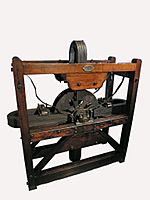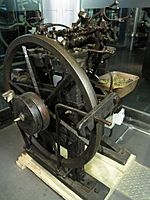Thinktank, Birmingham Science Museum facts for kids
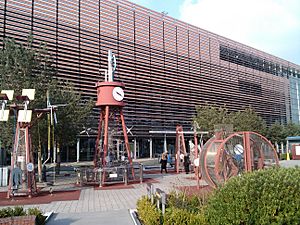
The Science Garden at Thinktank
|
|
| Lua error in Module:Location_map at line 420: attempt to index field 'wikibase' (a nil value). | |
| Established | 2001 |
|---|---|
| Location | Millennium Point, Birmingham, England |
| Type | Science and industry |
| Visitors | 243,069 (2019) |
Thinktank, Birmingham is an exciting science museum located in Birmingham, England. It opened its doors in 2001 and is part of the Birmingham Museums Trust. You can find it inside the Millennium Point building on Curzon Street, in an area called Digbeth. It's a fantastic place to explore science, technology, and the history of industry!
Contents
Discovering Thinktank's History
Thinktank's story began in the mid-1800s with a collection of science and industry items. These first items included weapons and tools from Birmingham's gun-making past. In 1885, the Birmingham Museum & Art Gallery opened, and it also had some science displays.
Later, in 1951, a museum called the Museum of Science and Industry opened on Newhall Street. Over the years, this museum gathered many amazing objects. These items showed off local industries and the history of science and technology.
In 1995, the city decided to build a brand new museum. This was made possible with help from the Millennium Commission. The old museum closed in 1997. Then, on September 29, 2001, Thinktank opened as part of the huge £114-million Millennium Point complex. The city council and the Millennium Commission helped pay for it.
Unlike the old museum, Thinktank charges a small fee to enter. In 2005, the museum got a big upgrade costing £2 million. This included adding a cool Planetarium! By 2007, over 1 million people had visited. Since 2012, the Birmingham Museums Trust has been in charge of Thinktank and eight other museum sites.
In 2015, a new "Spitfire gallery" opened. It showed how these famous planes were made right here in the local area. One special item was a leather flying helmet that belonged to Helen Kerly. She was one of only two British civilian women praised for flying during World War II.
Amazing Collections at Thinktank
Thinktank has many incredible objects that show off Birmingham's history of making things.
Aircraft Collection
| Photo | Item | What it is |
|---|---|---|
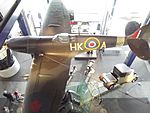 |
Supermarine Spitfire Mark IXc | This Spitfire (ML 427) was built in 1944. It was one of about 10,000 Spitfires made at Castle Bromwich. You can see it hanging from the ceiling! |
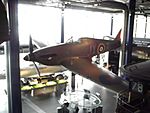 |
Hawker Hurricane Mark IV | This Hurricane (KX829) was built in 1943. It also hangs from the ceiling. |
Locomotives (Trains)
| Photo | Item | What it is |
|---|---|---|
 |
46235 City of Birmingham | A huge steam locomotive built in 1939. It was given to the museum in 1966. |
 |
William Murdock's model steam carriage | This is a model of a steam-powered car from 1784! |
Trams
| Photo | Item | What it is |
|---|---|---|
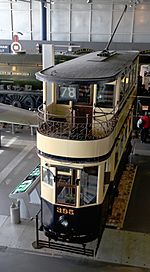 |
Birmingham Corporation Tramways tram 395 | This is the only Birmingham tram that still exists today. |
Cars
| Photo | Item | What it is |
|---|---|---|
 |
Railton Mobil Special | A famous car known for breaking land speed records. |
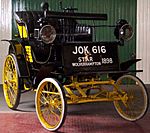 |
Mercedes-Benz car | Made by Star Motor Company in Wolverhampton in 1898. |
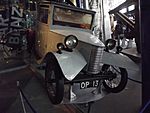 |
Lanchester petrol-electric car | Designed by Frederick William Lanchester in 1926. |
 |
Austin 7 | An Austin 7 Tourer car from 1923. It's one of the oldest examples left! |
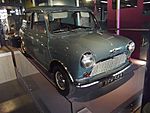 |
Morris Mini-Minor | A classic Mini car built in 1959. |
Stationary Steam Engines
Thinktank has a large collection of steam engines that stayed in one place to power factories or pumps. Here are some examples:
| Photo | Item | What it is |
|---|---|---|
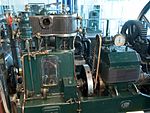 |
Belliss Steam Generator | From 1891, this engine helped make electricity. |
| Crossley Vertical Atmospheric Gas Engine | An engine from 1873, designed by Eugen Langen and Nicolaus August Otto. | |
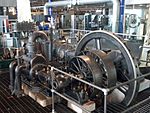 |
Galloway Uniflow Engine | From 1924, designed by Johann Stumpf. |
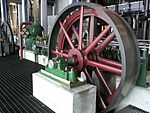 |
Corliss Mill engine | A powerful steam engine used in mills. |
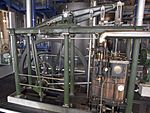 |
Easton & Amos pumping engine | Used from 1894 to the 1950s to pump coal gas in London. |
| Murray's Hypocycloidal Engine | Made around 1802, it's the third-oldest working engine in the world! | |
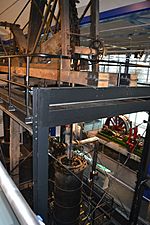 |
Smethwick Engine | The oldest working engine in the world! Designed by James Watt in 1779. It still runs on steam some days each year. |
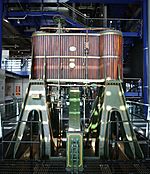 |
Steam Pumping Engine 'Rollit' | Built in 1883 by James Watt & Co. |
Other Cool Machines
Exciting Displays and Galleries
Thinktank has four floors packed with over 200 hands-on exhibits and cool objects. Each floor used to have a main theme, moving from the past to the future.
| Photo | Level | Gallery | What you'll find |
|---|---|---|---|
| 0: The Past | Move It | See vehicles made or used in Birmingham, like bikes, cars, trams, trains, and planes. Watch robots show how cars are spot-welded together! | |
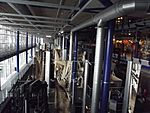 |
0: The Past | Power Up | Explore the museum's amazing steam engine collection. Learn how power is made, from old engines to modern steam turbines. |
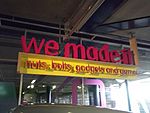 |
1: The Balcony | We Made It | This gallery has over 20 interactive exhibits and 1200 objects! It shows how Birmingham became known as "the workshop of the world." See how everyday items are made from raw materials. |
 |
2: The Present | Things About Me | This fun exhibition helps younger kids understand how their own body works and how to stay healthy. It's a bright and lively space! |
 |
2: The Present | Wild Life | Discover living history with insects, birds, mammals, and amazing fossils. See taxidermied animals like a polar bear and a great auk, plus a Triceratops skull! |
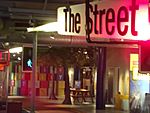 |
2: The Present | The Street | The Street shows how science affects your daily life. Learn how objects around you work, like a Recycling Plant. |
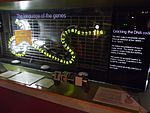 |
2: The Present | Medicine Matters | This exhibition explores modern medicine and new discoveries. Learn about DNA, genetics, vaccinations, and personal health. |
| 3: The Future | Futures | The Futures gallery looks at how science, technology, and medicine impact us now and in the future. You can use interactive screens, create an alien, and even program a RoboThespian robot! | |
 |
Outdoor | Science Garden | This is an interactive outdoor space with over 30 exhibits! It's a great place to learn and play outside, right in front of Thinktank. |
 |
3: --- | Planetarium | Thinktank's Planetarium opened in 2005. It was Birmingham's first digital planetarium! It has 70 seats and a huge dome. You can travel to the stars, see how the night sky looks, and watch films about space, the human body, and even undersea exploration. It can also show music and light shows! |
Around the Museum
Thinktank shares the Millennium Point building with Birmingham City University. It's located in the Eastside area, near Aston University and the historic Gun Quarter. Right across the street, you'll find The Woodman pub and the old Curzon Street railway station, both very old and important buildings.
Images for kids


